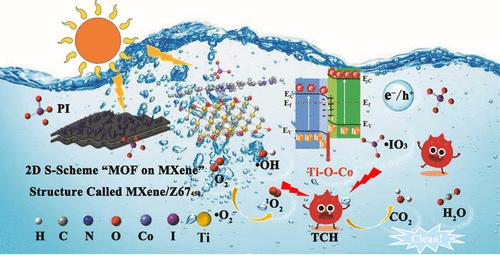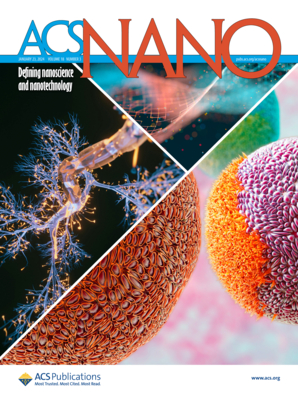An S-Scheme MOF-on-MXene Heterostructure for Enhanced Photocatalytic Periodate Activation
IF 15.8
1区 材料科学
Q1 CHEMISTRY, MULTIDISCIPLINARY
引用次数: 0
Abstract
Fully understanding the periodate (PI) activation system is still a great challenge, which calls for efficient heterogeneous catalysts with a sophisticated structure. Herein, we developed “MOF-on-MXene” heterostructures. By constructing S-scheme heterostructures MXene/Z67450, the internal electric field is generated via the Ti–O–Co bonds at the interface, favoring the excitation of the photogenerated electrons, providing a driving force for accelerating the charge transfer, and enhancing redox performances. Further contributed by the synergy of Ti–O–Co and Co–N4 bonds, the MXene/Z67450 composites exhibit enhanced ability for activating the periodate system to degrade organic pollutants via building a donor–catalyst–acceptor system. In the presence of periodate and light, MXene/Z67450 degraded ∼100% of tetracycline hydrochloride (TCH) in only 10 min. The active sites of the heterostructures can react with the periodate and give the intermediate MXene/Z67450-PI (*PI). As a result, it efficiently reduced the PI adsorption energy and promoted the decomposition of PI and the formation of holes/electrons, singlet oxygen (1O2) as well as hydroxyl radical (•OH). In addition, the MXene/Z67450 composites exhibit high stability, reusability, selectivity, and environmental robustness. Our study provides a research direction for rationally designing MXene-based heterojunctions and applying them in the periodate activation system.

求助全文
约1分钟内获得全文
求助全文
来源期刊

ACS Nano
工程技术-材料科学:综合
CiteScore
26.00
自引率
4.10%
发文量
1627
审稿时长
1.7 months
期刊介绍:
ACS Nano, published monthly, serves as an international forum for comprehensive articles on nanoscience and nanotechnology research at the intersections of chemistry, biology, materials science, physics, and engineering. The journal fosters communication among scientists in these communities, facilitating collaboration, new research opportunities, and advancements through discoveries. ACS Nano covers synthesis, assembly, characterization, theory, and simulation of nanostructures, nanobiotechnology, nanofabrication, methods and tools for nanoscience and nanotechnology, and self- and directed-assembly. Alongside original research articles, it offers thorough reviews, perspectives on cutting-edge research, and discussions envisioning the future of nanoscience and nanotechnology.
 求助内容:
求助内容: 应助结果提醒方式:
应助结果提醒方式:


